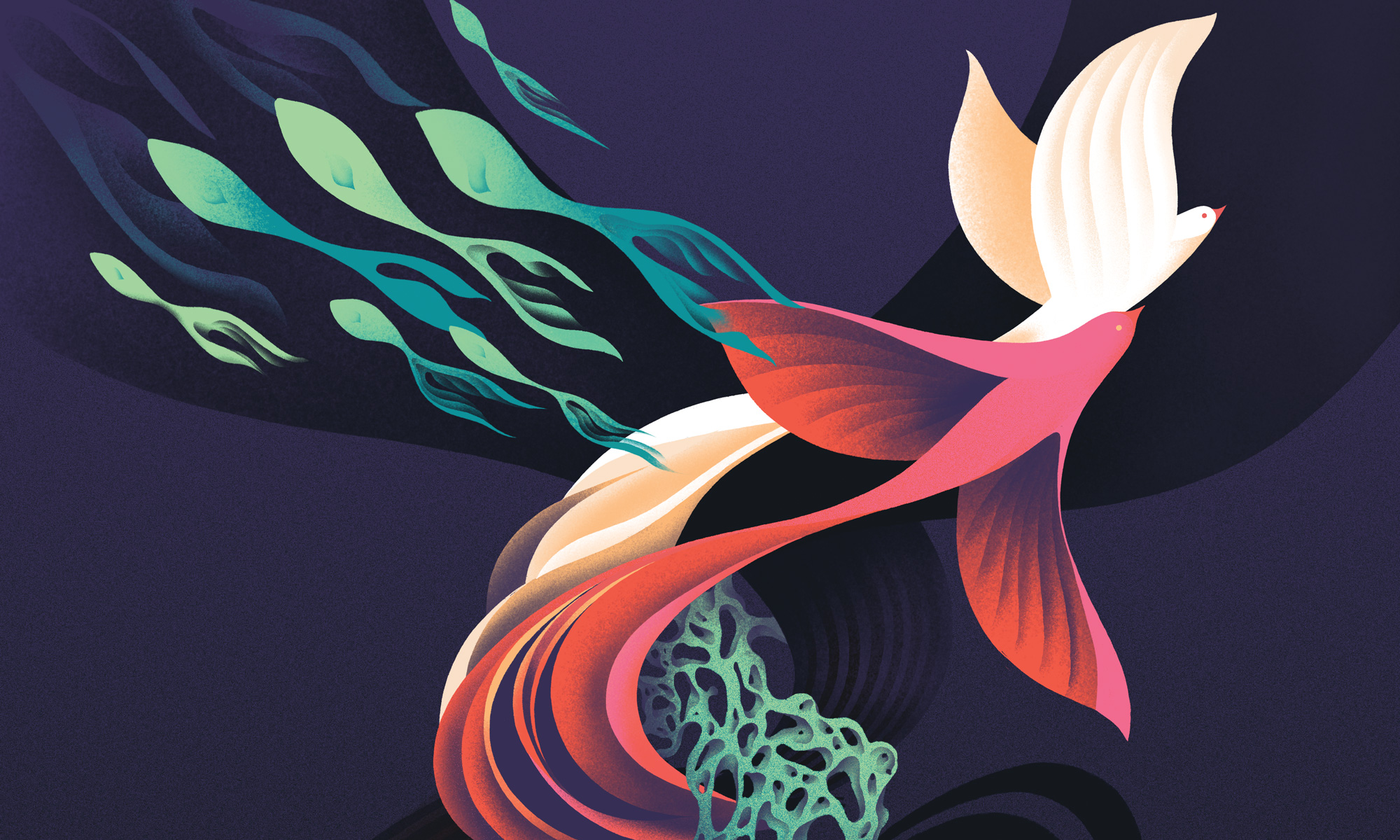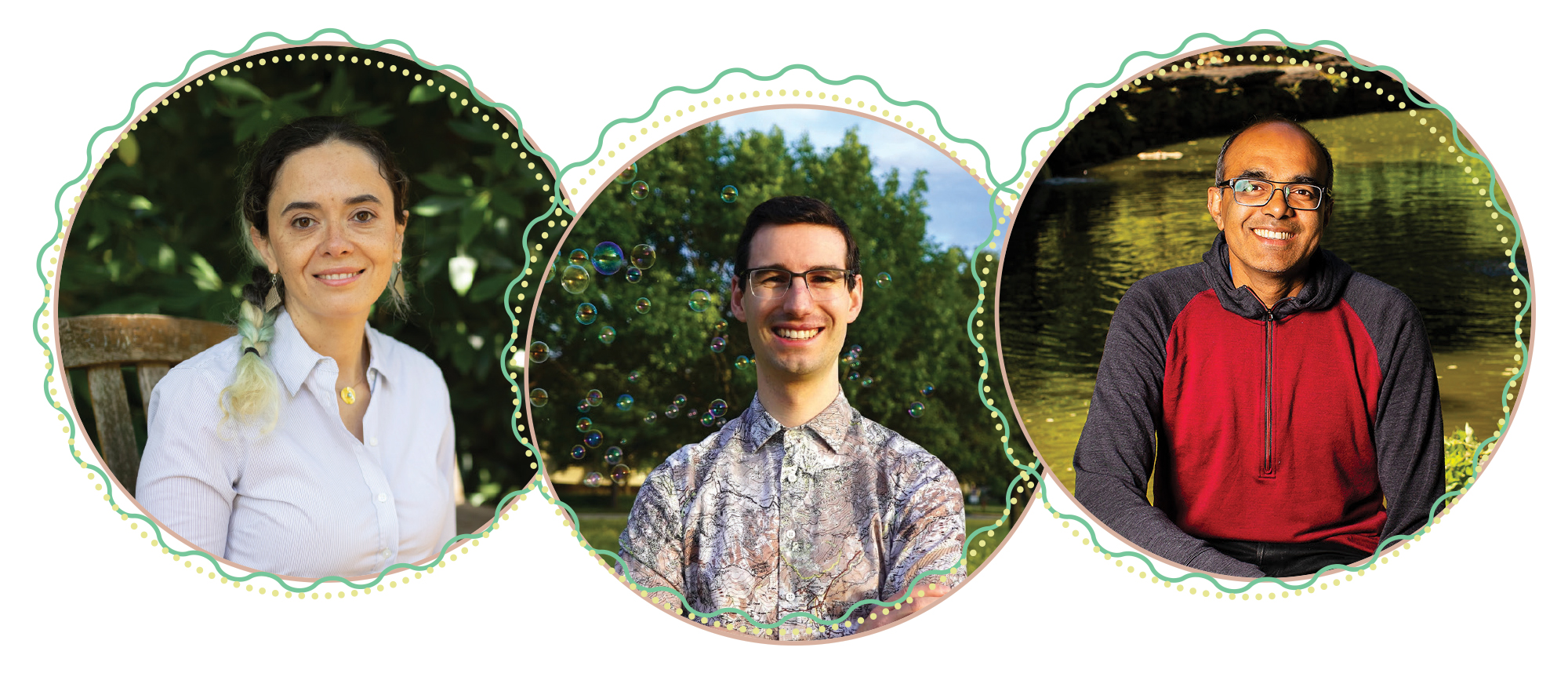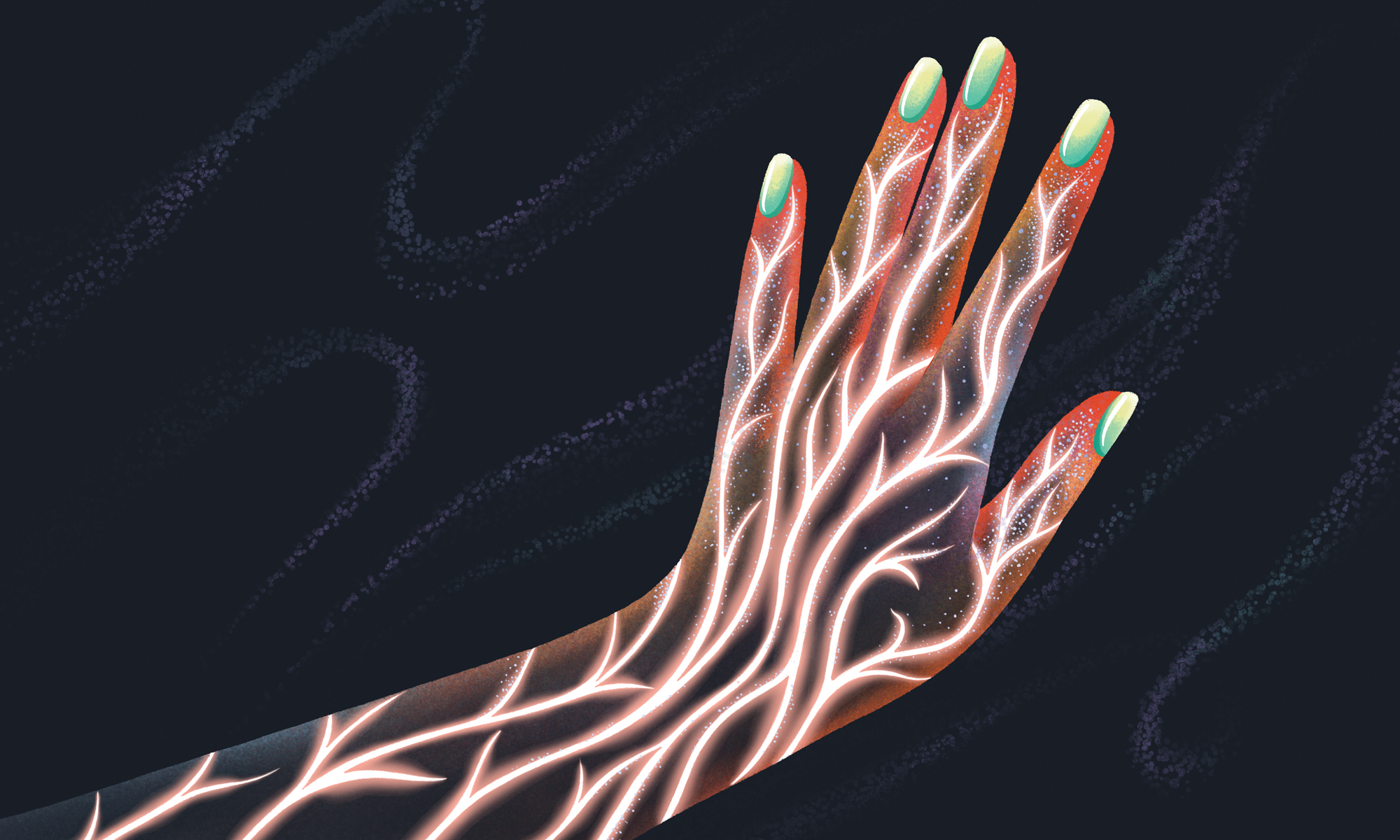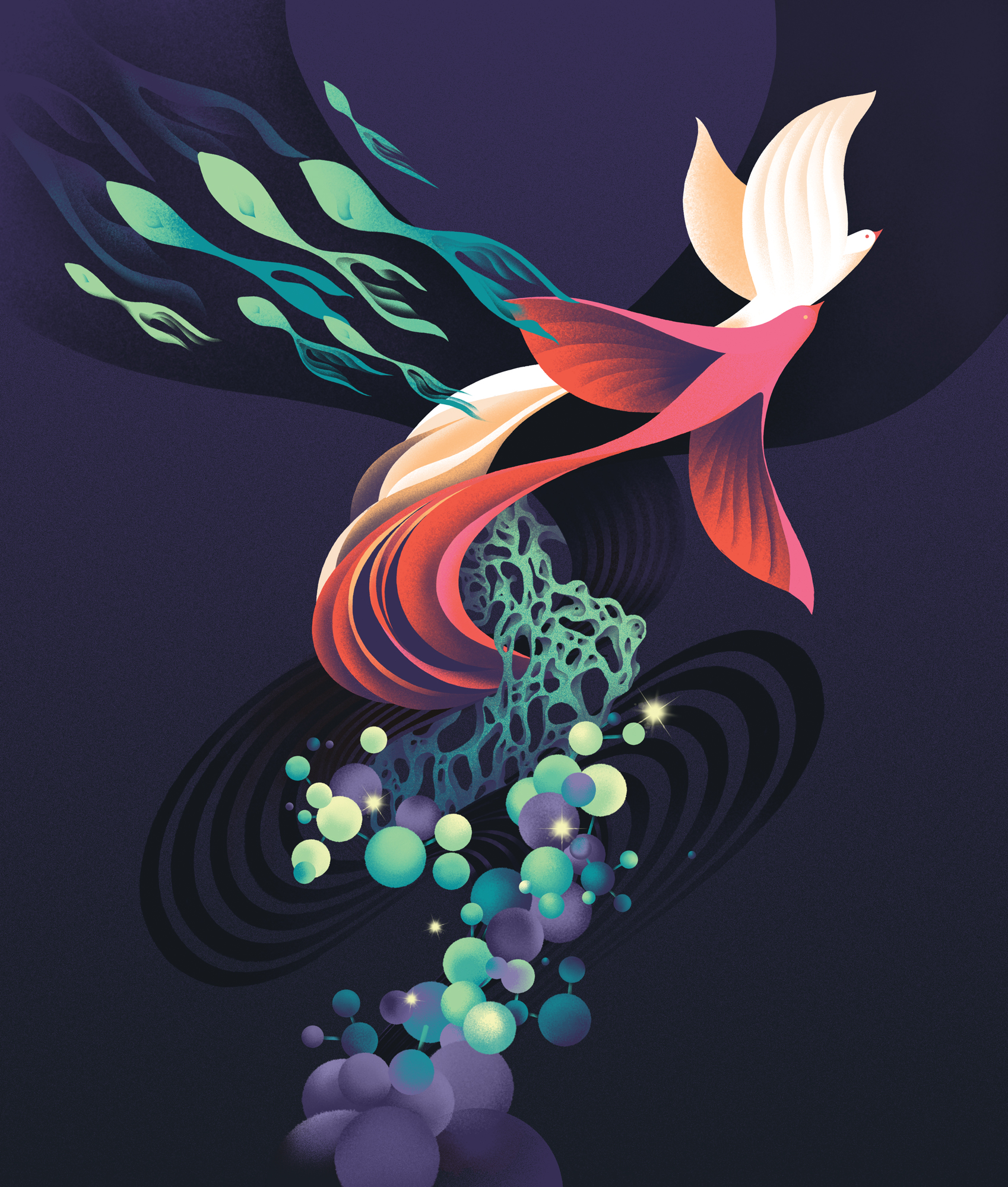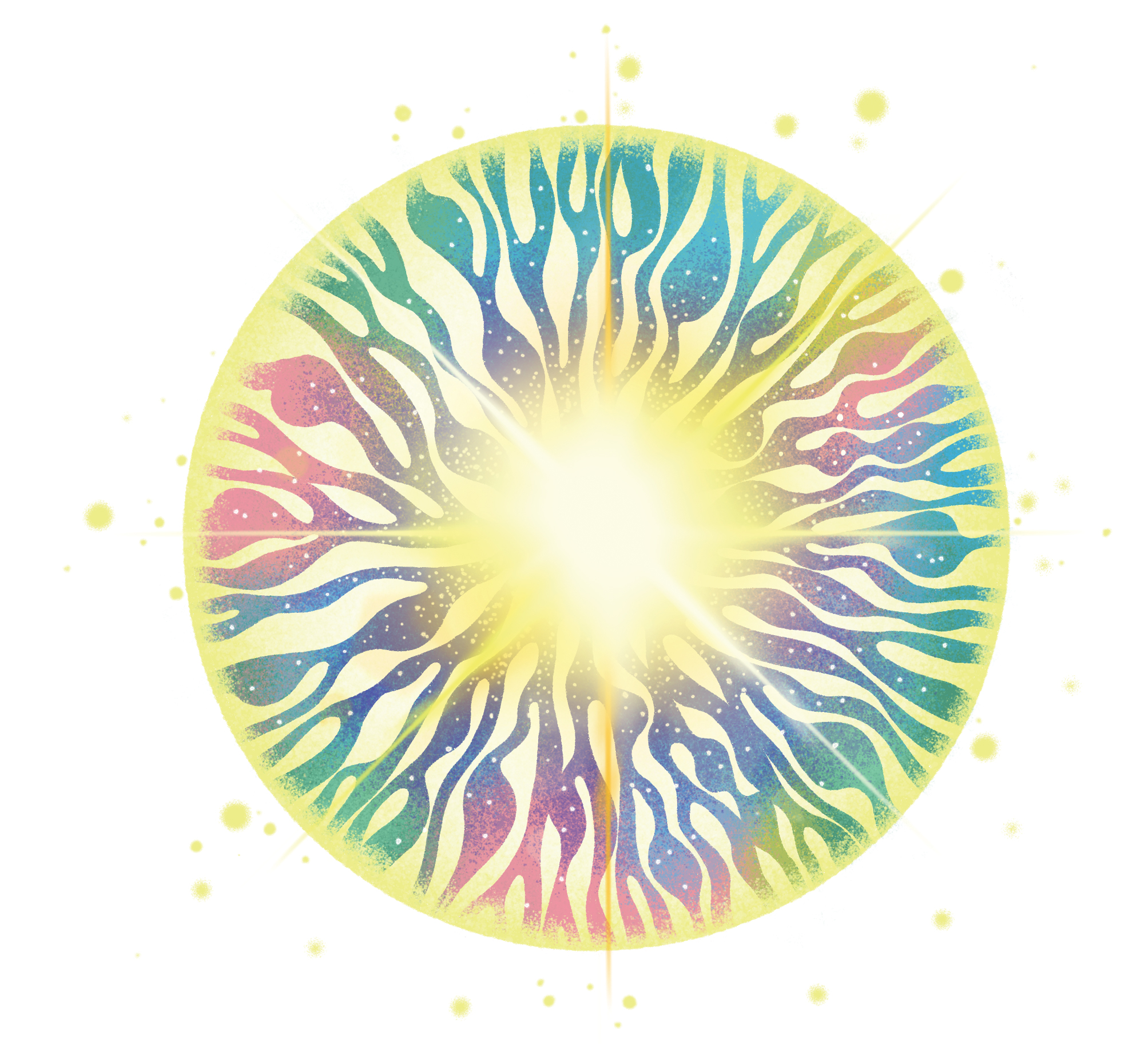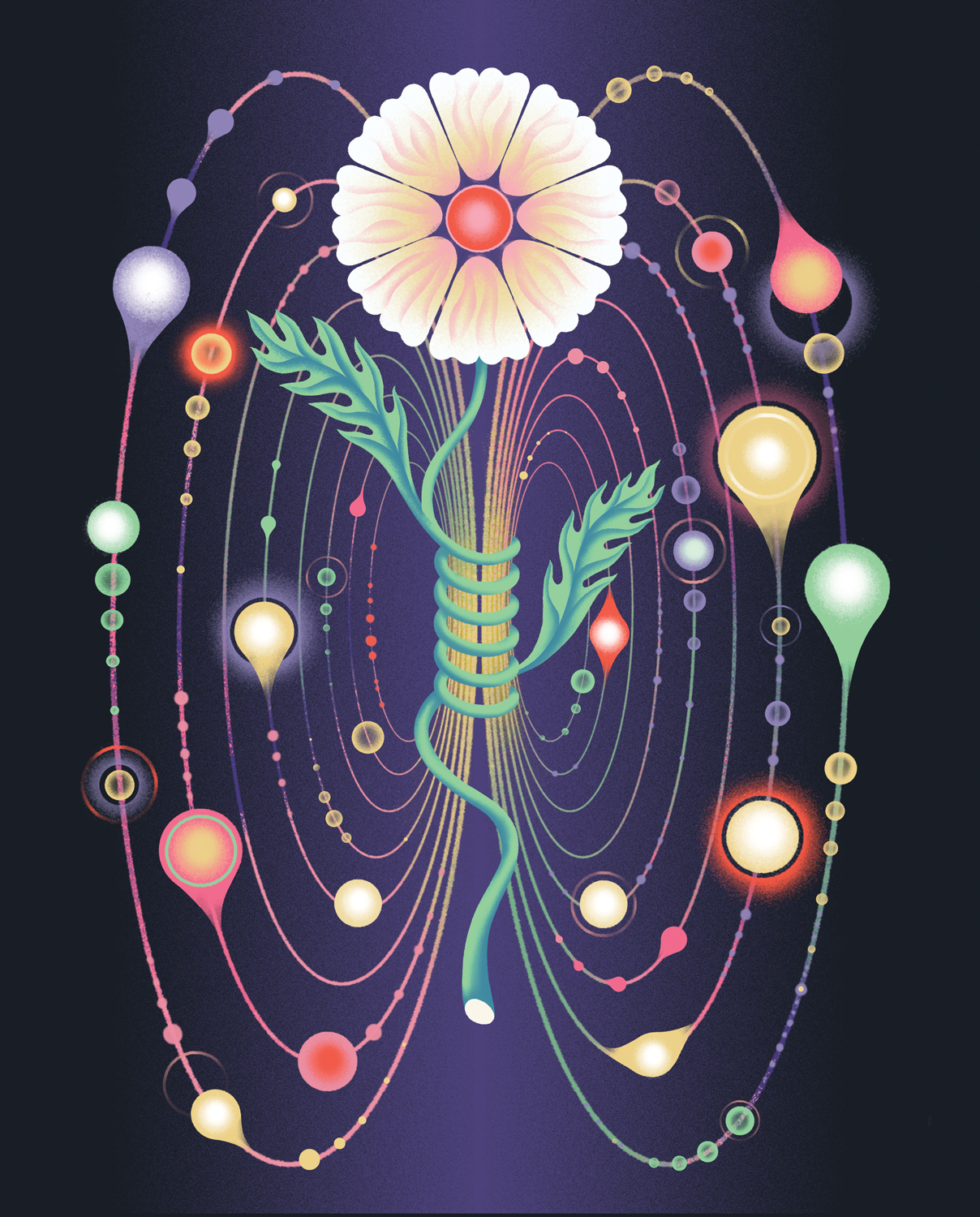
The James Webb telescope is showing us our universe in vibrant new detail. Some physicists, though, are looking in another direction: at us and other living matter here on Earth, from the cilia in lungs to the vasculature in leaves to the neurons in brains. What they’re finding is equally marvelous, and it’s challenging some of the current understanding of physics.
Ultimately, they’re working to discover the rules that govern how matter lives and evolves, and their research may lead to better medicine, robotics based on biology, and an expanded understanding of the physical and biological world.
How can an intelligent system arise from the collective dynamics of its basic components?
“We’re using physics principles to understand life and living matter,” says Eleni Katifori, Associate Professor of Physics and Astronomy, who studies vasculature in plants and animals. “But we are also using living matter as an inspiration to discover new physics, for asking the right questions or new questions.”
“Biology has already invented a lot of things. Living matter, from bacteria to leaves to humans, works in ways that physicists don’t understand, much less can duplicate,” adds Arnold Mathijssen, Assistant Professor of Physics and Astronomy. His goal is to unravel the physics of pathogens, design biomedical materials, and understand the collective functionality of living systems out of equilibrium. “It’s fundamental research. For example, how can an intelligent system arise from the collective dynamics of its basic components? It’s also directly relevant to our society, as in, what is the probability of SARS-CoV-2 transmission within a food supply chain?”
Leading the Way
The study of biophysics is not new; Luigi and Lucia Galvani were already investigating animal electricity in the late 1700s. In the last 20 years, though, technological advances have allowed researchers to see microscopic phenomena in living tissue with unprecedented detail, record simultaneously from thousands of neurons, and even track the large-scale behavior of ecosystems. All of these new methods produce vast amounts of quantitative data from which we can infer the laws of living matter. But it wasn’t until 2022 that the National Academies of Science, Engineering, and Medicine recognized biological physics as a separate field.
Penn Arts & Sciences physicists have been studying living matter for decades, bringing Penn to the front of this area. Philip Nelson, Professor of Physics and Astronomy, wrote key books in the field, starting with Biological Physics: Energy, Information, Life in 2014. He’s been honored with the Emily Gray Award of the Biophysical Society for his “far-reaching and significant contributions.” Arjun Yodh, James M. Skinner Professor of Science, has received the Michael S. Feld Biophotonics Award of the Optical Society of America for his pioneering work in demonstrating and clinically translating biomedical optics. A.T. Charlie Johnson, Rebecca W. Bushnell Professor of Physics and Astronomy, is using biological molecules as chemical recognition elements in disease diagnosis, security, and environmental monitoring. Marija Drndic, Fay R. and Eugene L. Langberg Professor of Physics, explores mesoscopic and nanoscale structures, including the detection and analysis of DNA and microRNA.
In 2021, Penn Arts & Sciences and Penn Engineering made a unique investment in this interdisciplinary study with the new Center for Soft and Living Matter. Led by Director Andrea J. Liu, Hepburn Professor of Physics, and Associate Director Douglas J. Durian, Mary Amanda Wood Professor of Physics and Astronomy, the center brings together more than 60 faculty from the two schools. And Penn’s Computational Neuroscience Initiative, cofounded by Vijay Balasubramanian, Cathy and Marc Lasry Professor of Physics and Astronomy, involves researchers from Arts & Sciences, the Perelman School of Medicine, and Engineering.
“If you look at a different scale or regime, new phenomena always pop up,” says Balasubramanian, a theoretical physicist who also holds a secondary appointment in neuroscience in the Perelman School of Medicine. “It’s the interactions between the components of living systems that make them so interesting, unlike, for example simple gases in a room. The brain contains a hundred billion interacting neurons. Molecules can talk to the whole organism, pheromones can change the behavior of entire colonies of organisms, stress can change gene expression. So, living systems interact across scales of organization unlike most physical systems that we are used to.”
What Is Living?
Physicists don’t all agree on how to define living matter, but Balasubramanian gives it three characteristics: It is complex, it adapts according to circumstances, and it often acts as if it has a purpose like staying alive or reproducing.
It is also unique because its components work together is such complicated ways. “A single molecule, you cannot really call alive,” says Mathijssen. “But when you put a bunch of enzymes and proteins and molecular motors in a membrane and we call that a cell, then suddenly these things have shared functions and they will cooperate with each other in such a way that we call that living.”
We know very little about how to deal with systems that interact to produce a collective effect across a range of scales from genes to ecosystems, and that are exceedingly complex with many different interacting parts. Molecules work together to form organelles and cells; cells form tissues, and tissues give rise to organs and eventually organisms. “And even these organisms will work together, like bird flocks to confuse predators,” says Mathijssen, who was named one of Scientific American’s 30 Under 30 in 2012 and received the Charles Kittel Award from the American Physical Society in 2019. “This notion of cooperativity and shared functionality is something that, in physics, we don’t know how to explain. But that’s exactly what we try to do in physics, to find rules of universality, to see if a school of fish behaves the same as a school of bacteria.”
Inspiration for this work is everywhere; one of Mathijssen’s projects grew out of a conference dinner at the Georgia Aquarium. “We were looking at this school of fish, and there were these little particles in between them, and we were really just curious,” he says. “Does the school push these particles forward, or are the tails of the fish pushing the particles back instead?”
How materials are transported in a group is a question of survival for microbes like bacteria, which run out of food and oxygen quickly because they live in very high concentrations. “So, it can be curiosity, but then you think, hey, wait, this is actually not just applicable to this one aquarium, but it ranges across a set of questions in microbiology,” says Mathijssen. “But then also maybe you can use this in microrobotics. Because if you want to deliver drugs, then you can also use this to move things from A to B.”
Mathijssen studied particle physics in college but began working on biophysics while earning his doctorate, “because life itself fascinates me.” He and his lab move back and forth between microorganisms and microrobotics, collaborating with researchers in Penn Engineering and the Singh Center for Nanotechnology. They’ll sometimes build a device based on a biological finding, and sometimes try to build a model to help figure out a biological function.
“It’s entirely possible to come up with a thought on a Monday, and then by Friday you may already have tested something in the lab,” he says. “This close connection of going back and forth all the time and testing your idea and then maybe changing your theory again, that dialogue is something that really attracted me.”
One recent project was based on long filaments, called microtubules, found inside cells. Molecular motors can move along these filaments against a flow. In the past, free-swimming microrobots have been explored as a way to deliver therapeutics within a blood vessel, but these can disperse in the strong flows. Mathijssen and his group made a system using filaments with embedded magnets, which would allow precise delivery and could someday treat blocked blood vessels or cancerous tumors.
The lab’s study of how bacteria move in and are cleared out of the lungs, inspired by the COVID-19 pandemic, led them to build another device: tiny magnetic beating hairs that pump liquid, emulating the cilia that are the main driving force behind mucus clearance in lungs. They’re trying to learn if there is a connection between the alignment of the cells and the efficiency of bacterial clearance, something that links to conditions like cystic fibrosis.
The Math of Life
Eleni Katifori also studies flows in the context of understanding the topology and architecture of vascular networks, whether it’s the xylem and phloem in leaves and plants, or the arterial, venous, or lymphatic system in animals.
“Everything that is larger than, let’s say, a millimeter has to have some sort of vascular system. We can’t have life without it,” she says. “And yet there is still so much we don’t understand. I get up in the morning, I brush my teeth, go to work, and the whole system seems to work. So, this idea that something that is very everyday is still so mysterious is quite intriguing to me.”
Katifori became “enamored with plants” while earning her Ph.D., and began working on biological flow networks in plant leaves during a postdoctoral appointment. Then she realized that for dynamics, animal vasculature was more interesting mathematically. She received an NSF Career Award—the National Science Foundation’s most prestigious award in support of early-career faculty—in 2016, and was named a Simons Investigator in the Mathematical Modeling of Living Systems in 2018. She and her lab are seeking to uncover the physical principles behind how these complex networks build themselves and what functions they’re optimizing through evolution.
You have to talk about everything from the whole colony down to the individual neurons.
The vasculature in our bodies is not entirely genetically directed, she says, but instead self-organizes according to a set of equations she’s trying to discover. “We are asking, is this consistent with optimizing efficiency? Is this consistent with optimizing robustness? And if it’s not, what constraints came in the way? Maybe the absolutely optimal architecture would look different, but this biology cannot build that version.”
Ultimately, she wants to be able to predict how the vasculature will form—or malform, like when an artery narrows, or how a vessel will change downstream from a blockage. “If I put in what I’m trying to optimize and what my constraints and costs are, basically, I crank the machine and I get some principles,” she says. “This is what makes it very exciting for me, just discovering what kind of math biology is using to solve a particular problem.”
Katifori says her biggest challenge is deciding what to leave out. “There is a tremendous amount of stuff going on inside the vessel. It’s not just water flowing through a pipe.” Vessel walls are elastic and every time the heart beats, a pulse is transmitted to the rest of the body, something she believes impacts how the network builds itself. There are also different kinds of cells interacting with each other inside the fluid, and the potential for coagulation. “It’s a living thing. So, figuring out which of that information is relevant is something I struggle with.”
Seeing Life in Action
Along with faster computers and machine learning, new technological tools for biophysics include ways to record and analyze neurons, or to genetically modify them to fire under laser light or to glow when they fire. DNA and nanostructures can be manipulated. Cameras can take hundreds of images per second, and there are new ways to bring light to microscopes which allow researchers to study living systems.
Technology is allowing Balasubramanian to go to the birds—he’s collaborating with Marc Schmidt, Professor of Biology; and Kostas Daniilidis, Ruth Yalum Stone Professor of Computer and Information Science at the School of Engineering, to study how cowbirds pair bond at Schmidt’s aviary at the Pennovation Center. “At the beginning of the season, you have 10 males and 10 females. You introduce them into the aviary,” Balasubramanian says. “The males sing. The females evaluate them: Is that a good song, is that not a good song? And they decide whose song is better.” The cowbirds use this information to form a social hierarchy that guides their interactions. By the end of the season, they’re mostly pair bonded, and the success of these bonds affects the success of the egg laying. The process is a little reminiscent of high school, complete with cliques and bullying if we anthropomorphize the behavior, but it has serious implications for the long-term success of the flock.
Previously, to analyze the birds’ behavior, researchers would need to sit outside an aviary and make notes on what they saw and heard. Now they’re close to getting a 24/7 recording of all of the birds’ poses and songs, and automating the analysis of the data. “It’s a complex system, and it crosses scales,” says Balasubramanian. “You have to talk about everything from the whole colony down to the individual neurons. It takes neuroscientists, physicists, and engineers all working together to do this kind of thing. This is not the kind of collaboration you could have envisioned 20 years ago.”
Balasubramanian talked his way out of every biology course after sixth grade, arguing he wouldn’t need it. In college he earned degrees in physics and computer science, then an M.S. in computer science, with the goal of understanding information processing, including by the brain, the computer inside our heads. He then realized that the engineering approach wasn’t answering the questions he had, and switched to physics for his Ph.D. An advisor suggested that he might be interested in systems neuroscience as a field, and he began working more and more with biologists. Now his research focuses on how natural systems manipulate and process information to produce new forms of self-organization.
Balasubramanian, a Fellow of the American Physical Society, has worked on neural systems that are involved in the senses of sight, hearing, and smell; control of the body; spatial navigation; and decision-making. Recently, he realized that some ideas on molecular sensing in his work on olfaction (the sense of smell) could also be used to understand aspects of adaptive immune systems in vertebrates and bacteria. For example, his work with postdoctoral fellows Hanrong Chen, now at the Genome Institute of Singapore, and Andreas Mayer, now at University College London, led to a paper identifying a new scaling law for immune memory in the CRISPR-based system used by bacteria to defend against recurrent viruses.
A Team Effort
The collaboration available at Penn, with all its schools on a single campus, is vital to the study of living matter. “You get to talk to people that have a very different view about things and very different backgrounds than you,” says Katifori.
She is working with researchers who have been able to digitize the vessels in the brain, from capillaries to arteries. This lets her see data and use machine learning to examine, for example, statistical differences between different areas, or how disease affects the vasculature. “We know that Alzheimer’s, for example, correlates with microvascular phenotypes in the diseased brain,” she says. “I’m not claiming this is the reason for Alzheimer’s, but there’s definitely a lot going on that we don’t understand. And these types of techniques to image the micro-vasculature will be revolutionary for understanding flow, for understanding the biology, but also for disease.”
“I’ve been working on hydrodynamics for maybe two or three years, and I had never seen the bacteria under the microscope,” says Mathijssen. “And you realize for the first time you look through those goggles that, wow, this is somewhat what I expected, but there are really different things going on as well. And you need the right people to come together for that, and the right facilities and tools. The Singh Center for Nanotechnology is unparalleled when it comes to the nanofabrication techniques that they can do here.”
Biology found a similar solution to the same physical problem, transport, using very different tools, very different biology.
There are challenges to collaboration in that researchers from different areas need to learn each other’s lingo. “You have to pick these things up by working with somebody, or reading enough papers,” says Balasubramanian. “And you learn how to talk to each other.”
There is also often a degree of luck in finding a pathway to biophysics during graduate school and after. Mathijssen believes that Ph.D. programs should try to give students that training to bring fields together and help them get out of silos, “but that’s often easier said than done. And so, the risk is then that you could get stuck in your own area because you don’t understand what someone else is doing.”
The Big Picture
Balasubramanian has long theorized about William of Occam’s “razor,” which states that causes should not be multiplied beyond necessity. Scientists now use it as a rule of thumb that says when you don’t have much data, a simple explanation is better than a more complicated one. He’s working on a paper with former postdoc Philip Fleig, now at a Max Planck institute in Germany, in which they argue that systems making decisions with limited information—for example, bacterial colonies deciding which phenotype to express—do better by implicitly using simpler models of the world.
Beyond bacteria, Balasubramanian says that data are showing that both humans and machine learning systems working with limited information implicitly implement a tendency toward simplicity. “Probability theory says to prefer simple explanations when you don’t have much data. And these two learning systems, the human brain and deep learning networks, seem to learn such biases against complexity without being told that they should. I think these common features of learning in animals and machines are very exciting.”
Looking ahead, he says, “Anything involving the theory of learning directly affects the question of what kind of learning engines can be built, what can they learn, and why they learn. Understandings of how the brain works always have potential applications, in medicine as well as in things like building neuro-prosthetics. You could build a replacement retina, if you knew how it worked. You could also put in a robot.”
The study of living matter suggests nearly endless avenues of usefulness. Understanding immune systems would have applications from making yogurt by helping the relevant bacteria to better survive bacteriophage attacks to designing vaccines to help defend humans against seasonal viruses. We could develop materials that heal themselves or learn, or even an item that can become a different toy depending on what a child wants.
Katifori also sees universality in her work. “You look at vasculature in these wildly different organisms with entirely different genes that evolved completely independently, in a plant leaf and in our bodies. And yet you see the same core principles emerging. And that is very, very exciting. Biology found a similar solution to the same physical problem, transport, using very different tools, very different biology. The physical truth is the same.”
“We don’t know how to describe, for example, what is the temperature of an active system,” says Mathijssen. “It does not follow the same laws of physics. And we don’t know what those new laws of physics could be, and so that’s why we try to come up with the simplest possible models to remove all the redundancies and really just think of the essence of the material and see if we can write down equations. And I think the field is now in a state where we don’t know whether this would work.”
He compares it to the beginning of quantum mechanics. “Now we are in a similar state, but we try a lot of different things and maybe we can solve small systems first and then see how it generalizes. In science, by definition, you head into the unknown. But what we do know is that there is progress every day, and there are really good new theories being developed in this field,” like equations that explain how the motion of individual birds in a flock affects the motion of neighboring birds. “And I think that’s why it’s so exciting to work in this field, because it is now really coming together.”


